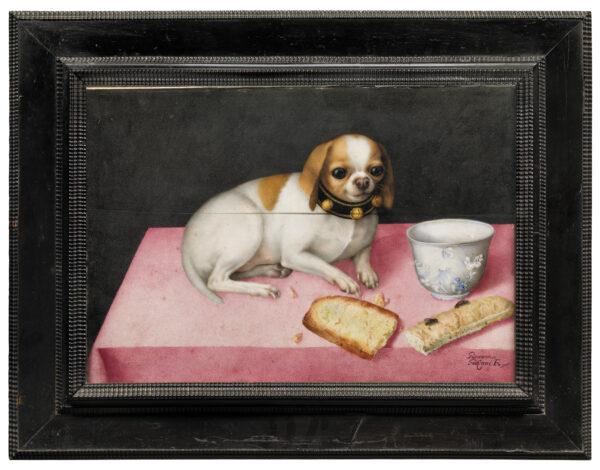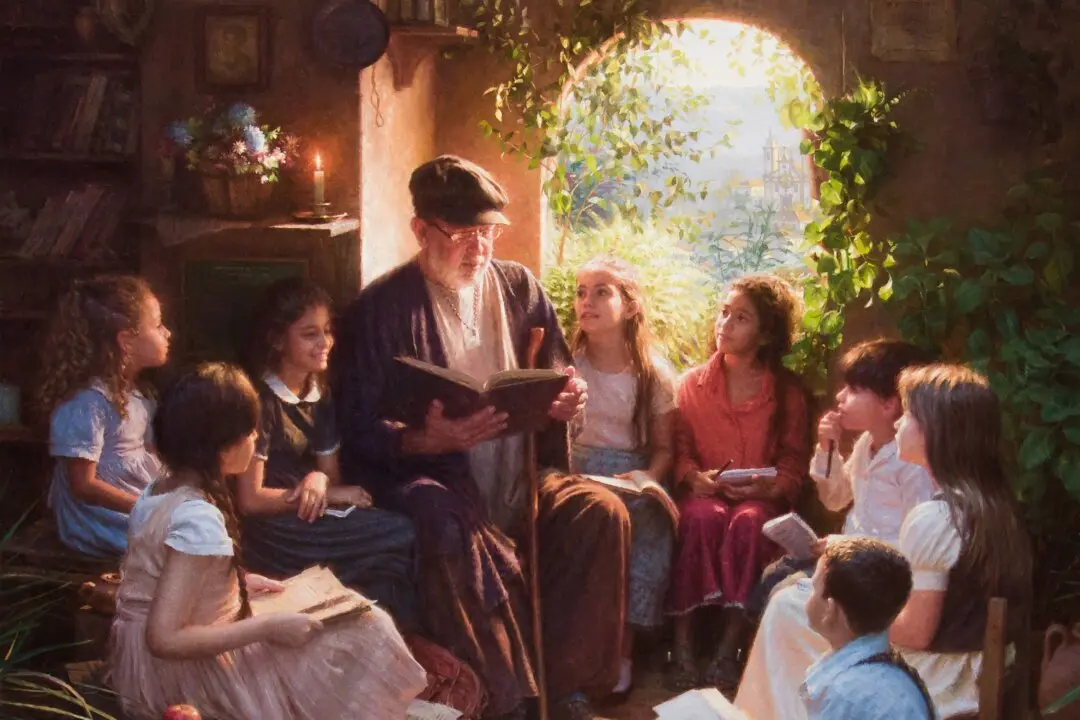An adorable lapdog looks out of a picture frame, as if we’ve interrupted him nibbling on some rather delicious-looking Italian biscuits. He sits attentively on top of a pink table cloth, beside a Chinese porcelain cup. In the short moment that he glances at us, two flies take the opportunity to settle on the food. This rather whimsical painting is an iconic image by Italian Baroque painter Giovanna Garzoni.

Lapdog with biscotti and a Chinese cup, circa 1648, by Giovanna Garzoni. Tempera on parchment; 10 7/8 inches by 15 1/2 inches. Palatine Gallery, The Uffizi Galleries, Florence. The Uffizi Galleries, Florence






